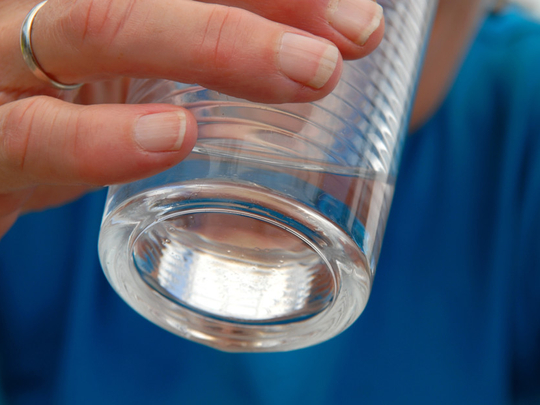
My daughter has her first crush. It isn’t any of the boys in her nursery school (thankfully, as she just turned 4). Instead, she has a massive fascination with juice. It is all she can talk about.
She used to ask for water every time she felt thirsty, but I guess she has sipped enough juice boxes to recognise that it tastes pretty darn good. She isn’t picky; any sort will do. Even the green juice I make at home attracts her eye, but although it is higher in nutrients than a typical juice box, I still don’t want her to replace her daily intake of water with juice.
The American Heart Association recommends that children consume no more than 12 grams of added sugar a day. One cup of apple juice has 24 grams of sugar, twice the daily allotted amount. Unlike whole fruit, juice lacks fibre, quickly releasing sugar into the bloodstream, causing a blood sugar rise and a resulting drop. Not an ideal scenario for a child’s mood, energy level, blood sugar or pancreas.
Coinciding with my daughter’s interest in juice, my boys are indignant that many of their friends drink soda and Gatorade on a regular basis. Sorry, boys — not going to happen. Our bodies need water. Plain, been-around-for-billions-of-years, unsweetened, unflavoured, crystal-clear water.
Next to air, water is the most essential element to our survival. It is necessary for the proper function of every single cell in the body, and it makes up more than two-thirds of the body’s weight. The Academy of Nutrition and Dietetics recommends children aged 4 to 8 get 1.3 litres a day, though exercise level, climate, medications and other factors can affect how much a particular child needs. For ages 9 to 13, the recommendation jumps to 2.1 litres for girls and 2.4 for boys.
“A mere 2 per cent drop in the body’s water supply can trigger signs of dehydration such as fuzzy memory, daytime fatigue, trouble with math and difficulty focusing on small print,” Raymond Schep writes in his book “Eat Right for Life”. These are side effects we do not want our children to experience during a school day. (We don’t want to experience them either, for that matter.)
Visualise a plum and a prune. Which one would you prefer your cells to resemble? Undoubtedly the plum; it looks healthier. When we become dehydrated, our cells shrink like a prune, making our brains and bodies sluggish, doctor and researcher Fereydoon Batmanghelidj writes in “Your Body’s Many Cries for Water”.
No wonder we can develop headaches, muscle cramps and foggy brains. Try a glass or two of water instead of Advil for that next headache; it might be all you need.
Imagine how much slower blood travels to the organs and cells when it is thicker. Your heart has to work harder, while oxygen and other essential nutrients arrive more slowly. This leaves you fatigued.
Water protects the spinal cord and lubricates the joints. It also ensures that waste products move in and out of cells, and ultimately out of the body through sweat (which also regulates body temperature) and urine. Without adequate hydration, the colon pulls water from stools, resulting in a backup of waste and then constipation.
Water also helps to digest food by making saliva, moistening the digestive tract, and facilitating the absorption of nutrients into the cells. In other words, when we are hydrated, we gain more nutrition from the foods we eat.
Now, you might be thinking, “Juice still has plenty of water in it, so doesn’t it have the same benefits?” But don’t be fooled into thinking that your child is getting enough water from the processed drinks she loves.
Sugar-laden drinks can slow the absorption of water into the bloodstream, and caffeinated, salty or sugary drinks usually increase the amount of water a child needs instead of actually satisfying her thirst.
Now you appreciate why I am ending my daughter’s relationship with juice before it has the chance to blossom. And why I am encouraging her to stay faithful to water.
Some ideas for your child:
Send her to school with a water bottle.
Send her to every sports game and practice with a water bottle instead of a sports drink.
Give her a colourful straw; children seem to enjoy drinking with one. Perhaps the straw will help to increase her water intake.
Encourage her to drink water right when she wakes up in the morning.
When she feels tired during the day, suggest that she drink a glass of water before anything else. According to Grace Webb, assistant director for Clinical Nutrition at New York Hospital, “People just think when they start to get a little weak or they have a headache, they need to eat something, but most often they need to drink water.”
Serve her lots of whole foods. She should be getting about 20 per cent of her body’s fluid intake from fruits, vegetables and wholesome soups.
Let her make her own special drink by adding berries, a squeeze of lemon or lime, a sliver of orange, a watermelon cube, cucumber slices, a sprig of mint or whatever fresh fruit, vegetable or herb will entice her to drink more water.
Modern technology is wonderful. I am thankful we have sophisticated systems to purify our tap water of bacteria and contaminants; yet I am less enthusiastic about the many modern drinks we’ve created. Do we really need sugar, caffeine, flavourings and chemicals in everything we sip? It is undeniably water our body wants and needs to survive.
–Washington Post
Casey Seidenberg is co-founder of Nourish Schools, a Washington-based nutrition education company.












